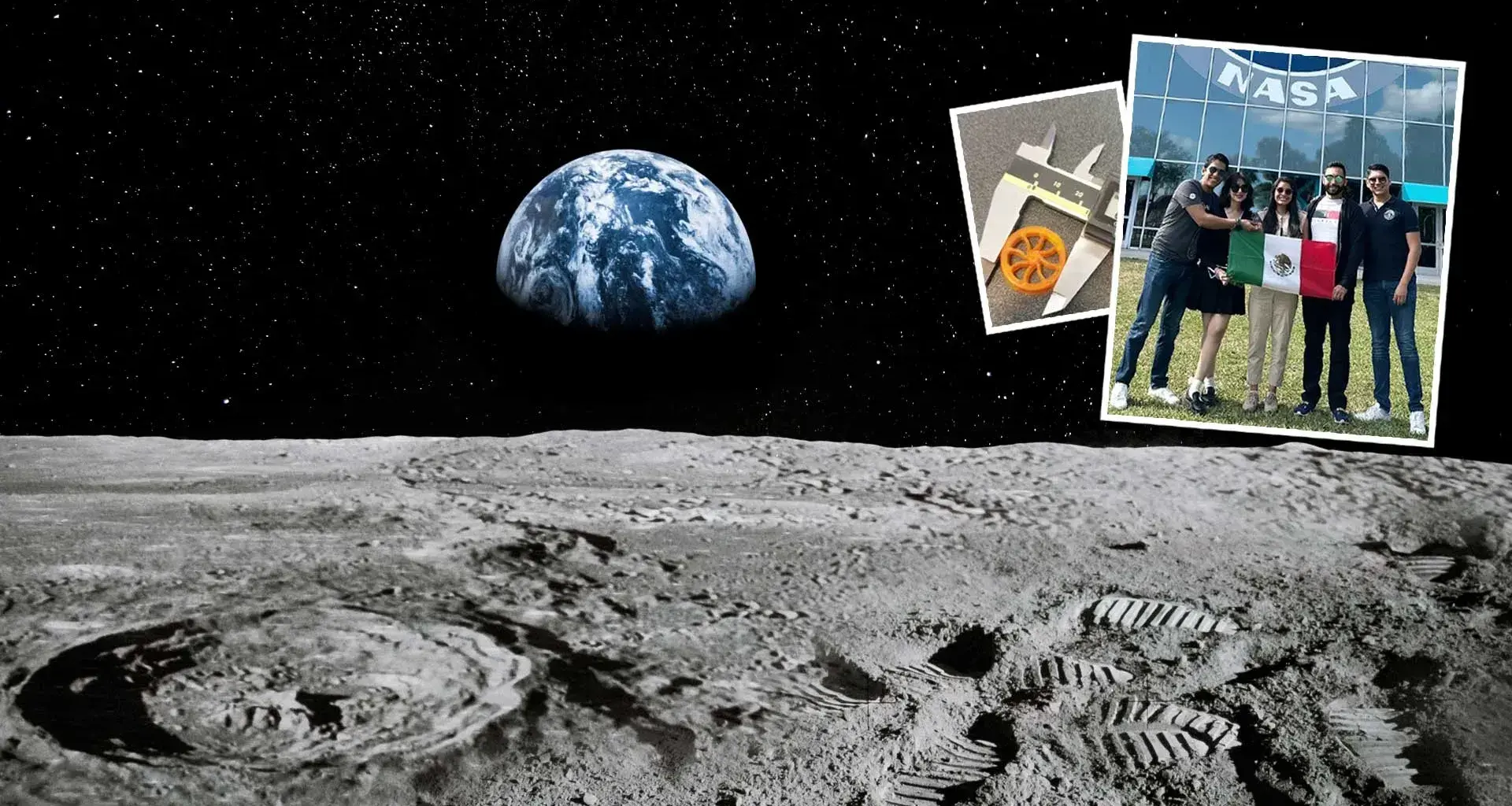Along with 12 other young Mexicans, four Tec de Monterrey students and one Tec graduate participated in the design of the Úurich flexible mechanism, which will be tested on the International Space Station (ISS).
The Tec students who participated on the design were Valeria Bastida, Marcos Cuevas, Sebastián Llanos, and Raquel Reyes; the Tec graduate was Cosette Valenzuela.
Valeria Bastida, an architecture student, told us about her experience of being invited by NASA to witness the launch of SpaceX’s Falcon 9 rocket, on which this mechanism traveled.
“I heard the roar of the booster rockets, I felt a very strong vibration throughout my whole body, and then I saw the whole sky light up. I was in shock for a few seconds and felt like I was going to cry because of the intense emotion. I couldn’t believe that something I worked on was going into space.”
Úurich is a flexible device that manages to transfer force or generate movement by means of elasticity and deformation of its material, which will be tested for six months on the ISS.
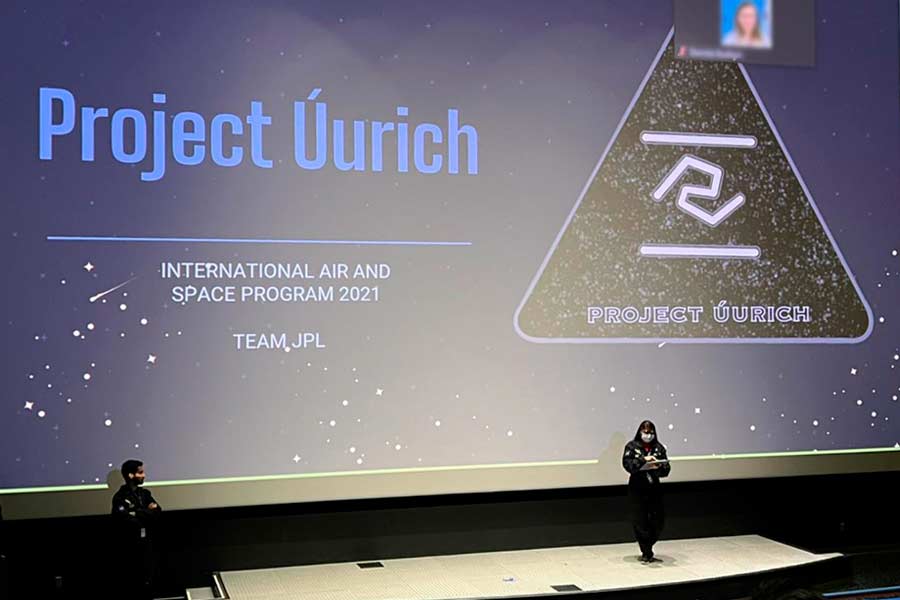
These young Mexicans were given this opportunity in 2021 thanks to their participation in the International Air and Space Program (IASP) organized by the Aexa Aerospace company at NASA facilities.
In that year of the program, more than 120 young people from different parts of the world, divided into teams, responded to the challenge of taking 5 days to design a device no larger than 1 x 1 inch in size that could withstand and adapt to the conditions of space.
With the Mexican team winning the ‘Best Mechanism Design’ category, their next step was to manufacture the device over the course of 2022, which they did on their own.
Valeria, who is in her tenth semester at the State of Mexico Tec campus, shared what it was like to work on this space project in an interview with CONECTA.
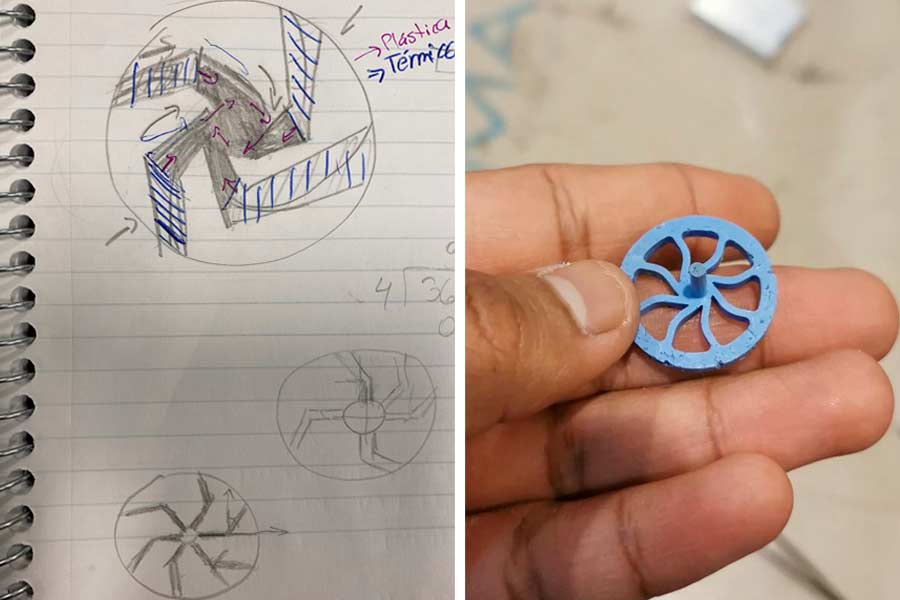
Úurich: How it was conceived and built
The 25-year-old student said that she helped design the Úurich structure, a mechanism capable of deforming in response to temperature changes to generate movement.
“This mechanism is what we call compliant, flexible, monolithic, or one-piece. It’s a mechanical structure that manages to generate movement or transfer force through the elasticity and deformation of materials and components,” Bastida said.
“The mechanism has a diameter of one inch and is composed of two rings, one internal and one external. When there’s deformation or temperature change, there are some little arms between the rings that generate movement by pushing on the outer ring,” she added.

She also said that after analyzing about 33 materials and testing three of them, they manufactured the device using fluorosilicone, a material that can expand and contract with temperature changes.
The premise of the project was to design a mechanism that would be resistant in both design and material to the moon’s environment, where lunar dust, similar to microcrystals, is capable of corroding different types of resistant materials, including steel.
“This is a one-piece mechanism. There are no joints and no hinges because it would be very easy for the lunar dust to get into the little spaces inside them,” Valeria explained.
Potential applications
Valeria said that most mechanisms like Úurich that are capable of generating force and movement are usually installed in parts that need joints, such as robot parts.
“There’s a lot of potential for robotic parts or even pressurized doors because you can generate this expansion or contraction and you can block or let something pass through by using some kind of hose, for example, that allows or prevents the flow of a gas or fluid,” she explained.
“We made the mechanism thinking that it could be added to the hatches, especially for movement. It could even function on a larger architectural scale as a shell that protects from solar radiation,” she added.
The young woman mentioned that she would like to see Úurich being used in the long term in habitats on the moon or Mars, where it can protect spaces and even for personal use as part of space suits worn by astronauts conducting explorations.
“Úurich is a mechanical structure that is able to generate movement or transfer force through elasticity and deformation of materials and components.”
Test of capabilities and endurance
On March 14, the Falcon 9 rocket was launched into space from Cape Canaveral, carrying the mechanism to be tested for its capabilities and endurance.
Currently, Úurich is on the MISSE module (Materials International Space Station Experiment), where it will remain for six months to be analyzed. It traveled to space with about 600 other experiments, but it is the only one that is of 100% Mexican origin.
“The astronauts on duty on the Space Station will take pictures and measure the temperature of the mechanism on a monthly basis. They’ll look to see that there aren’t any cracks, fractures, or deformations that we haven’t contemplated.
“They’ll send us a monthly report over the next six months on how the mechanism is performing,” Valeria added.
The student added that since the ISS circles the Earth 16 times every 24 hours, the mechanism will be exposed to extremely high and low temperatures every day, as well as to a lot of solar and cosmic radiation.
“There are two main objectives: first, to test that the mechanism doesn’t break, and if so, to check to see that the damage is not so catastrophic that it stops working. That’s the most important objective because we would have to redo the calculations and designs if it breaks down.
“The second objective is to see how the fluorosilicone behaves with the expansion the movement is going to generate in the mechanism. It may expand, but if it doesn’t expand enough, it’s not going to generate the circular motion we’re looking for,” she added.
A ‘land snail’ in space
Two years ago, Valeria applied to the AEXA program to participate in its International Air and Space Program (IASP), which she was accepted to after passing several tests.
“I spent a week at the U.S. Space & Rocket Center in Huntsville, Alabama, and was able to participate in NASA’s Space Camp, where I trained as an astronaut and participated in activities such as planning a mission to the moon and building rockets,” she said.
The camp was attended by young people from various parts of the world, and they formed teams of 16 to compete in the proposed challenge that was part of the program.
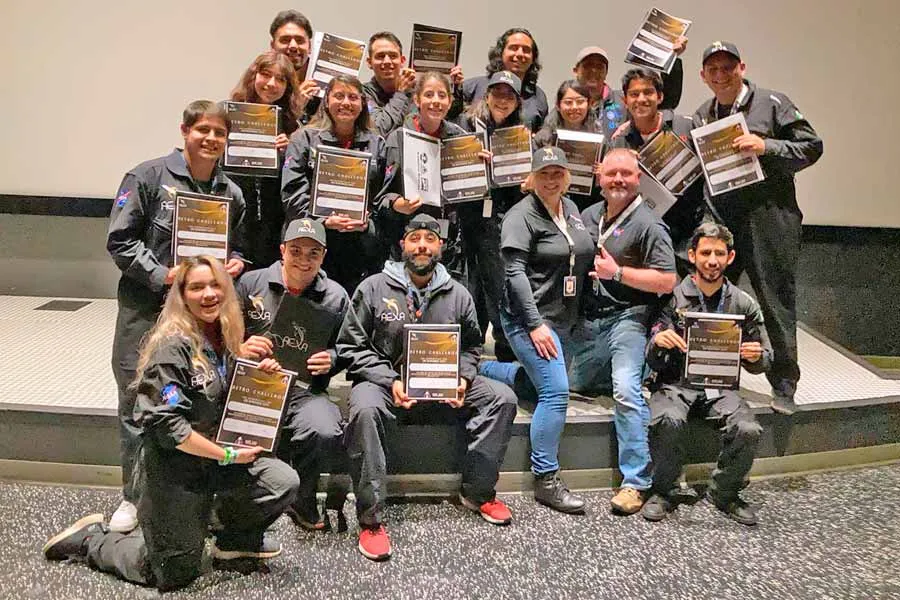
“Our team was the JPL team, in honor of the Jet Propulsion Laboratory. We won the ‘Best Mechanism Design’ category. The next step was to manufacture it in 2022 with tests of materials, process, and dimensions, and by NASA to launch it to the ISS.”
Valeria pointed out that even the name of the mechanism has Mexican roots. When analyzing its shape and comparing it to pre-Hispanic structures, they realized it looked like a land snail known as Úurich in Maya.
Finally, after testing several designs and three types of materials, three samples of the mechanism were manufactured. One was sent to Houston for analysis, one to Europe, and one to NASA.
The JPL team is made up of 16 young Mexicans from various universities in the country who were advised by NASA engineers and who worked for a year on the design and manufacture of the Úurich. They are:
- Valeria Bastida (State of Mexico Tec campus)
- Marcos Cuevas (Monterrey Tec campus)
- Sebastián Llanos (Puebla Tec campus)
- Raquel Reyes (Querétaro Tec campus)
- Cosette Valenzuela (North Sonora Tec graduate)
- Fernanda Sandoval
- Saúl Camacho
- Manuel Gutiérrez
- Leonardo Guzmán
- Carlos Hernández
- Katia López
- Lynette López
- Marco Macías
- Azael Reyes
- Jesús Romano
- Gerardo Vargas
Valeria’s dream: Designing space habitats
Ever since she was a girl, Valeria has been very passionate about anything having to do with space. She said that this was in large part thanks to her father, who is a geological engineer. In fact, it was her family who motivated her to enroll in the AEXA program.
She thought that as an architecture student and not a student in engineering or a STEM area, it would be difficult for her to be accepted into the program, but she was chosen because of her knowledge of aerospace and was able to participate in the competition by contributing to aspects of the design of the mechanism that is now traveling on the ISS.
“When they told us that Úurich was going into space, the first thing I did was call my dad and tell him the news that something I helped design was going to travel into space. I think it was one of the biggest celebrations I’ve ever had,” she said excitedly.
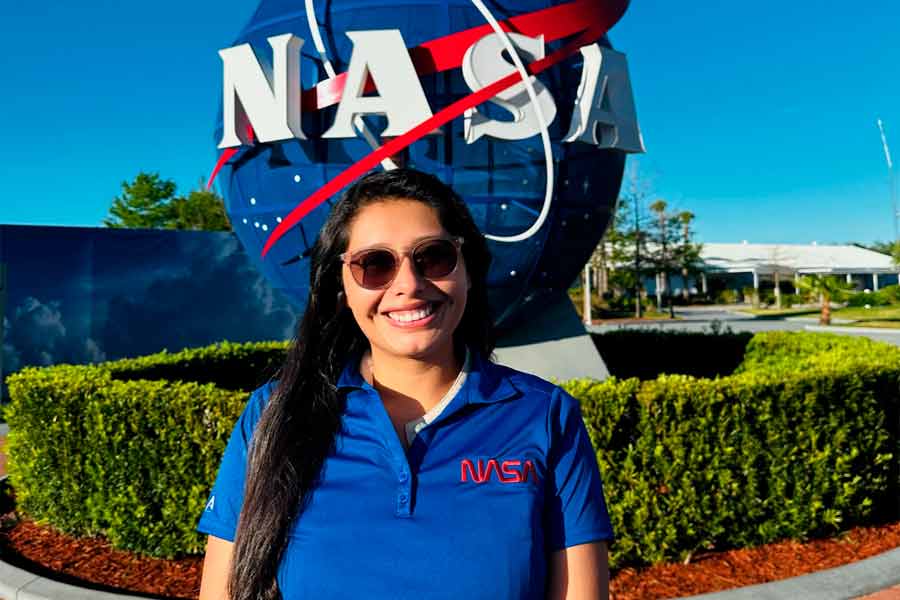
Today, Valeria is about to finish her degree at the Tec, where her final project will focus on designing a habitat on Mars. She hopes to study a Master’s degree in Aerospace Architecture in Houston after she graduates from the Tec.
“The Tec has helped me fulfill my dream in several ways. For example, when I went to camp, the Tec sponsored me, and they connected me to resources at FEMSA so I could make that trip, and now, they’ve given me the green light for the Mars habitat project.
“I’m very grateful to them for letting me do this final project. It’s something that’s never been done in the history of Architecture at the Tec, and I think my dream would be to design a permanent habitat on the moon or on Mars,” she concluded.
YOU’LL DEFINITELY ALSO WANT TO READ:

